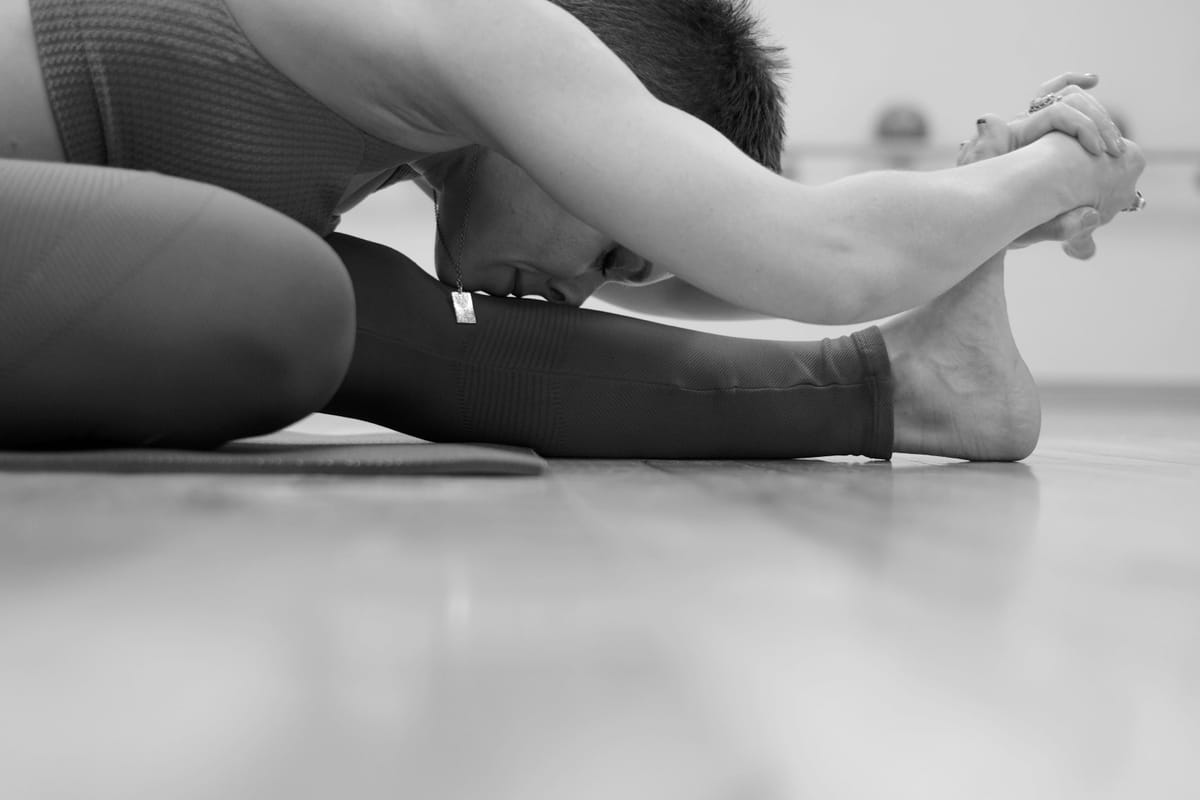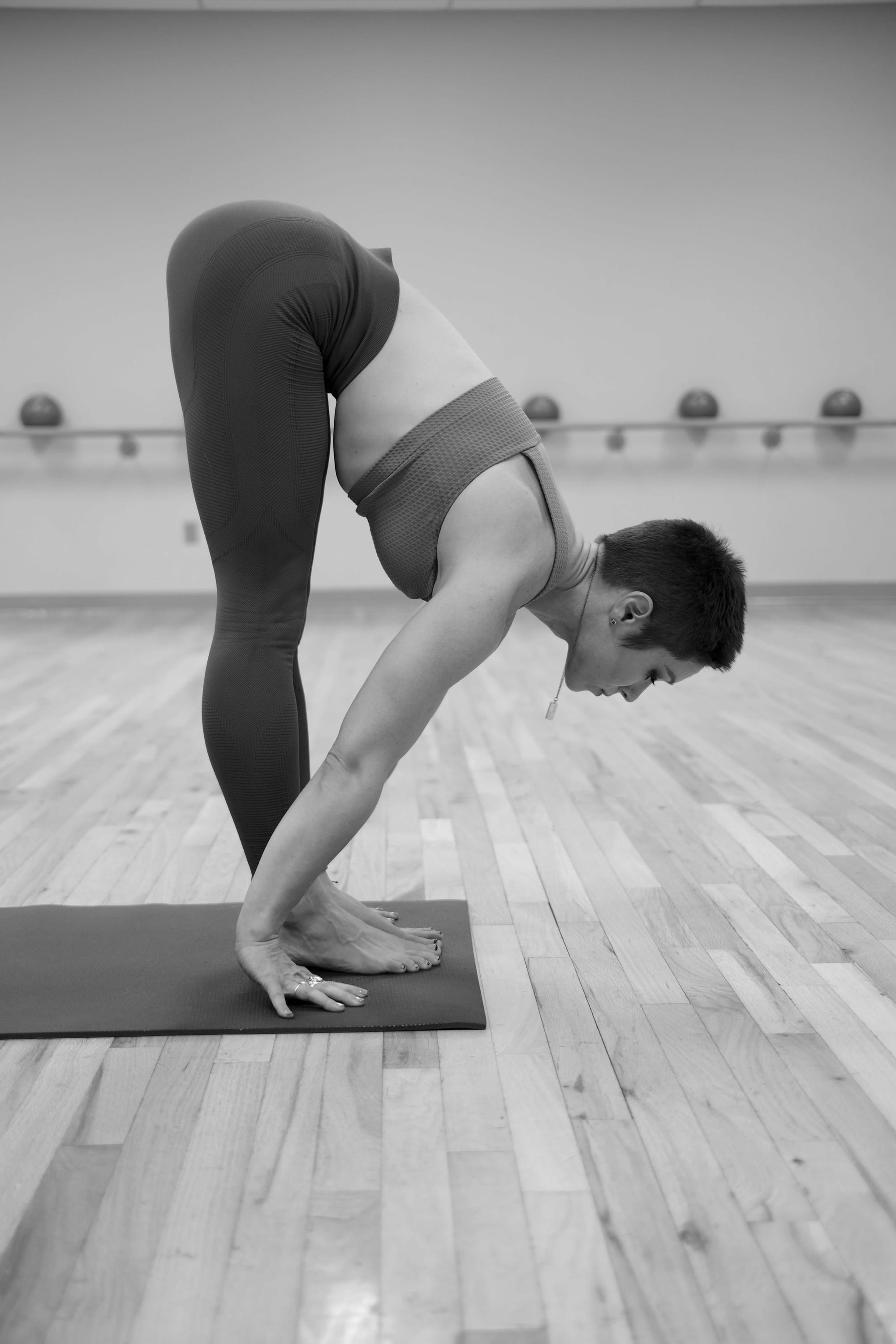
The journey within is never without twists and turns. No one is more aware of that than Katie Kanak, owner and lead teacher of Ashtanga Yoga Shala OKC — Oklahoma City’s first Ashtanga-only yoga studio.
Given that position, it might come as a surprise that despite her current dedication to teaching Ashtanga yoga full-time, the first few yoga classes she attended in 2011 didn’t fully draw her into the practice.
“At first, I was like, ‘I don’t want to go sit on a mat and stretch with people,’” admits Kanak. “But there’s got to be something to it.” She explains that over time, she could see past the physical postures and dive into the breathwork, giving her “the mind-body connection” that she had been perpetually craving (but not getting) from running.
After moving to Oklahoma from Wichita, Kansas, Kanak looked for a studio that would allow her to deepen her understanding of her yoga practice. Her search brought her to her first Ashtanga yoga class in Norman, where she fell in love with the approach this particular practice offers.
“I drove down there one day after work, took Primary Series, and no music, just breath. Very traditional,” remembers Kanak. “And after class, I was like, ‘What was that? This is it. This is exactly what I'm looking for.’”
After one month of practicing yoga with Andrew Eppler, Kanak signed up for yoga teacher training to learn the Primary Series, the first sequence of poses in Ashtanga. And despite expressing to Eppler that she wasn’t planning to teach afterward, this choice to join the teacher training changed her path forever.

Katie Kanak demonstrates Third Position Ardha Uttanasana
Woven Together
To understand Ashtanga yoga is to understand that what Western exercise culture has popularized as yoga is merely one piece of yogic philosophy. While many individuals may only interact with the physical practice of asanas (body postures) and call that yoga, Ashtanga is one approach that seeks to integrate all of the philosophical principles of yoga into one physical, mental and spiritual practice to take on and off the mat.
These principles — called the eight limbs of yoga — include moral teachings (restraints and observances), breathwork, concentration, sense withdrawal, meditation, higher concentration and participating in set postures. In fact, the word ashtanga is derived from two Sanskrit words: ashta meaning eight and anga meaning limb. All the limbs of yoga weave together in Ashtanga to allow the practitioner to develop crucial, deep inner strength while simultaneously building outer strength.
Additionally, in contrast to some yoga classes, Ashtanga practitioners traditionally work on a set series of postures established in a fixed, unchanging order. Only mastery of each posture will allow practitioners to progress from the Primary Series (where everyone starts) to the Intermediate and Advanced Series. In an Ashtanga session, there is no music, just focus on breath, energy, concentration and postures.
From Oklahoma to India
Even after receiving her 200-hour yoga teacher certification in Ashtanga yoga in 2013, Kanak didn’t immediately begin teaching Ashtanga. As Ashtanga and Vinyasa yoga share a common lineage, she taught other classes at studios across the metro and in her living room.
Her path took a new direction when she met her teacher David Garrigues in 2016. Garrigues is one of the few American teachers ever certified by the founder of Ashtanga in India. Their relationship started with workshops, which turned into weeklong intensives, culminating with Kanak traveling to India to train at the Ashtanga Yoga School of Mysore in Kovalam, India, from 2017 to 2019.
“While I was there, it was like starting from scratch,” says Kanak. “My practice deepened so much just from having a daily morning Mysore practice and being around others — their energy and their passion to learn and practice.”
After coming back to the U.S., Kanak began to offer a daily Mysore practice in her living room for a handful of eager practitioners, and continues to do so at her Ashtanga shala (Sanskrit for space or home, the term for an Ashtanga studio) that opened in August of this year. Mysore sessions, named after the city in India where Ashtanga was founded, are structured differently than an average class. In Mysore, there are windows of arrival where the student is expected to stay for 90 minutes each day. Instead of an instructor leading the class, the student begins to work through the set postures in the series with which they’re working. The instructor observing the session will walk from student to student to offer insight, individualized teaching and physical adjustments.
“I feel like it’s an empowering practice because the practitioner, the student, they get to learn how to be their own teacher,” says Kanak. “The Ashtanga yoga practice [allows] you to tailor it to what you need.”
Approaching the Journey of the Self
Considering the background and requirements of an Ashtanga practice and its lineage, it’s unsurprising that this approach has developed a reputation that can alienate potential practitioners. Pose modifications and props like blocks, straps and blankets are not found in Ashtanga in India.
But at Kanak’s Ashtanga shala, she prioritizes accessibility and modifications to the practice. This runs counter to many perspectives on traditional Ashtanga practice, and comes from a new movement — which was started by her teacher Garrigues — to make Ashtanga more approachable and welcome practitioners of all shapes, sizes and ages.
Kanak finds Ashtanga’s approach to a set series of postures offers a foundation for a practice that only gets better with age. Since the sequence is unchanging, practitioners can consistently engage with poses that challenge them and see how their practice evolves as they return to their mat and breathe each day.
“I’ve seen older people in their 50s and 60s with the most amazing practices, doing things that 20-year-olds and 30-year-olds still have a hard time doing,” says Kanak. She explained that older practitioners often have more success in Ashtanga, because “you just stop caring as much about what other people think, or your own expectations. And it’s just freeing.”
Three days a week at Ashtanga Yoga Shala OKC, Kanak offers led classes, which are structured more like a traditional class in which individuals are led through poses in the Primary series. She also hosts occasional workshops such as her upcoming Womb and Tantra Retreat on Dec. 12 which offers practitioners the opportunity to embrace their “feminine energy more fully” through meditation, breathwork and energy healing.
Additionally, thanks to her permanent location out of the OneHealthBod complex in Edmond, she offers people a community that can transform practitioners.
“A lot of healing, I feel, is done in private,” says Kanak. “When you’re in a community and there’s that safe, loving space being held, I look around, I’m like ‘They’re doing it, too.’ To be seen, it speeds up the healing process that much more.”
To learn more about Ashtanga Yoga Shala OKC or to register for the Womb and Tantra Retreat on Dec. 12, visit aysokc.com. You can also follow Katie Kanak on Facebook at Katie Kanak - Yoga or Instagram at kanakkatiemarie.

